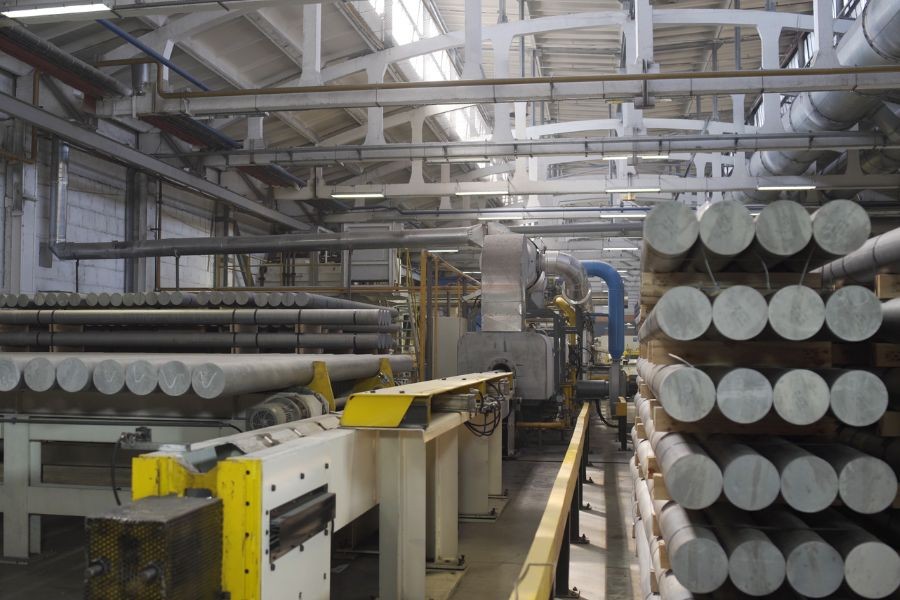In today’s rapidly evolving manufacturing landscape, aluminium extrusion has emerged as one of the most versatile and cost-effective production methods available to businesses across diverse industries. This sophisticated process transforms raw aluminium billets into complex, customized profiles that serve as the backbone for countless applications, from architectural frameworks to precision engineering components.
Understanding the Aluminium Extrusion Process
Aluminium extrusion is fundamentally a manufacturing process where heated aluminium billets are forced through specially designed dies to create profiles with specific cross-sectional shapes. The process begins with aluminium billets being heated to approximately 450-500°C, making the metal malleable enough to flow through the die while maintaining its structural integrity.
The extrusion process offers remarkable flexibility in design possibilities. Unlike traditional manufacturing methods that may require multiple machining operations, extrusion can produce complex geometries in a single pass. This capability makes it particularly valuable for creating intricate profiles with internal channels, multiple wall thicknesses, and integrated features that would be challenging or impossible to achieve through other manufacturing techniques.
Key Advantages of Aluminium Extrusion
The popularity of aluminium extrusion stems from its numerous advantages over alternative manufacturing methods. First and foremost is the exceptional strength-to-weight ratio that aluminium provides. This characteristic makes extruded aluminium profiles ideal for applications where weight reduction is crucial, such as automotive components, aerospace applications, and portable structures.
Cost-effectiveness represents another significant advantage. The extrusion process minimizes material waste since the entire billet is utilized in creating the profile. Additionally, the ability to incorporate multiple features into a single extrusion reduces the need for secondary operations, cutting both time and labor costs.
The corrosion resistance of aluminium is particularly noteworthy. Natural oxide formation creates a protective layer that prevents further corrosion, making aluminium extrusions suitable for outdoor applications and harsh environments. This durability translates to longer product lifecycles and reduced maintenance requirements.
Design Flexibility and Customization Options
One of the most compelling aspects of aluminium extrusion is the virtually unlimited design possibilities it offers. Engineers and designers can create profiles tailored to specific functional requirements, incorporating features such as snap-fit connections, cable management channels, mounting surfaces, and thermal management elements.
The process accommodates both simple and complex geometries. Simple profiles might include basic angles, channels, or tubes, while complex designs can feature multiple cavities, varying wall thicknesses, and intricate internal structures. This flexibility enables manufacturers to optimize their designs for specific performance criteria while maintaining cost-effectiveness.
For businesses seeking high-quality aluminium profiles with expert engineering support, companies like Aluminium Profile provide comprehensive solutions from design consultation through final production, ensuring optimal results for specialized applications.
Applications Across Industries
The versatility of aluminium extrusion makes it valuable across numerous industries. In construction and architecture, extruded profiles form the framework for curtain walls, window systems, and structural elements. The automotive industry relies heavily on aluminium extrusions for body components, chassis elements, and thermal management systems.
Electronics and technology sectors utilize precision extrusions for heat sinks, enclosures, and structural components. The clean, consistent finish achievable through extrusion makes these profiles particularly suitable for visible applications where aesthetics matter.
Industrial automation and machinery manufacturing benefit from the precise tolerances and consistent quality that extrusion processes deliver. Custom profiles can integrate mounting features, cable routing, and connection points that streamline assembly and improve overall system performance.
Future Trends and Innovations
The aluminium extrusion industry continues to evolve with advancing technology and changing market demands. Sustainability considerations are driving innovations in recycling processes and energy-efficient production methods. Aluminium’s inherent recyclability aligns well with circular economy principles, making it an increasingly attractive choice for environmentally conscious manufacturers.
Advanced alloy development is expanding the performance envelope of extruded aluminium. New formulations offer enhanced strength, improved corrosion resistance, and specialized properties for specific applications. These developments are opening new markets and applications previously dominated by other materials.
Digital manufacturing technologies are also transforming the extrusion industry. Computer-aided design tools enable more sophisticated profile optimization, while advanced simulation software helps predict performance characteristics before physical production begins.
The integration of aluminium extrusion with other manufacturing processes is creating new possibilities for hybrid components. Combining extrusion with machining, welding, or assembly operations allows manufacturers to create more complex, finished products while maintaining the cost advantages of the extrusion process.
As manufacturing continues to evolve toward more sustainable, efficient, and customizable solutions, aluminium extrusion stands positioned to play an increasingly important role in helping businesses meet their production goals while maintaining competitive advantages in their respective markets.

